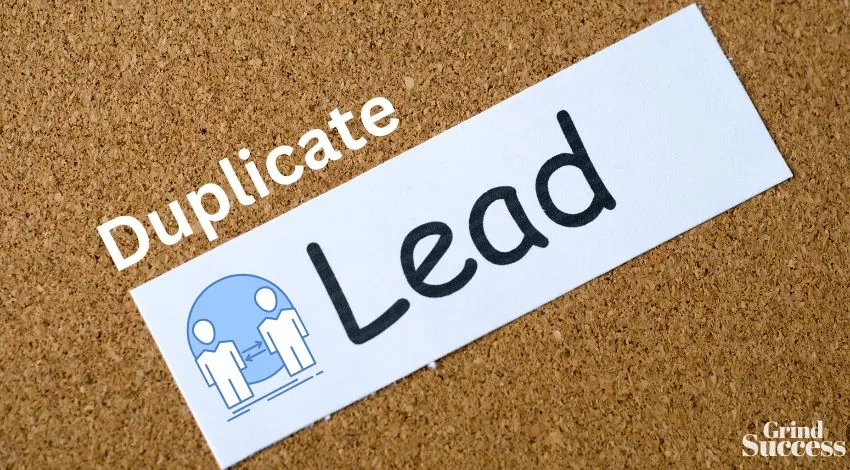Which Leads Are Classified as Duplicates? How do They Hinder Your Sales Process?
Duplicate leads can be a huge pain for sales teams. They often result in wasted time and effort prospecting the same customer twice, or worse — prospecting two different customers who turn out to be the same person!
According to experts, 10%-30% of data in a company’s system is duplicated. This is not a minor issue and can seriously impact your sales process.

In this blog post, we’ll explore duplicate leads, how they hinder your sales process, and what you can do to prevent them.
Which leads are classified as duplicates?
When two or more leads contain the same information, they are classified as duplicate leads. Duplicate leads can occur when a lead is imported into a CRM system multiple times or when a salesperson manually enters the same lead information into the system more than once.
Duplicate leads can harm your sales process because they can skew your data and metrics. For example, if you have two identical leads in your system, one is marked as “hot” and the other as “cold,” your CRM system reports will show that you have an unusually high percentage of hot leads.
This can give you false hope that your marketing efforts are working better than they actually are. Additionally, duplicates can cause problems when nurturing leads through the sales funnel.
For example, if you’re sending out emails to all of your leads, but some of them are duplicates, you’ll waste valuable time and resources sending emails to people who may never see them.
A strict lead entry process is the best way to avoid duplicate leads. Ensure all sales reps know how to check for duplicates before entering any new information into the system. You should also consider using a lead deduplication tool to automatically identify and merge duplicate records.
How are duplicate leads formed?
There are a few ways that duplicate leads can be formed:
Manual entry error
This is when a sales representative manually enters a lead into their CRM but accidentally creates a duplicate because they didn’t realize the lead already existed in the system.
Form submission error
This is when someone fills out a form on your website, but their information is already in your CRM from another source. For example, this can happen if they’ve previously filled out a different form on your site.
Data import error
This is when leads are imported into your CRM from another database, but there are duplicates because some data was already in your system.
Manual lead assignment error
This is when a sales representative manually assigns a lead to themselves, but they don’t realize that the lead was already assigned to someone else.
Automatic lead assignment error
This is when leads are automatically assigned to sales representatives based on certain criteria, but the system accidentally assigns a lead to more than one person.
How do duplicate leads hinder your sales process?
The impact of duplicate leads on the sales process can be significant. In some cases, duplicates can result in the loss of sales opportunities. In other cases, they can result in confusion and frustration for salespeople.
When duplicate leads are present in your CRM system, it can be difficult for salespeople to determine the most recent or qualified lead. This can result in lost sales opportunities as salespeople focus on the wrong lead.
Additionally, the confusion and frustration of duplicate leads impact their motivation and performance.
Besides that, there are many more ways in which duplicate leads impact your sales:
To avoid these issues, it’s important to have systems and processes in place to prevent duplicates from entering your system in the first place. Also, if you have duplicate leads in your system, train your sales team on how to handle them best.
How to avoid duplicate leads?
Following are a few tips to prevent duplicate leads in your system:
Use a lead management system
A lead management system can help you keep track of your leads and avoid duplicates. By centralizing your lead data, you can more easily spot duplicates and take action to eliminate them.
Clean up your database regularly
Regularly cleaning up your database will help ensure that duplicate leads don’t slip through the cracks. In addition, you can use a tool like LeadAngel to quickly and easily identify and merge duplicates from your database.
Use unique identifiers for each lead
When you’re entering lead data into your system, be sure to use unique identifiers for each lead. This will help you spot duplicates more easily and prevent them from entering your system.
Use lead scoring
Lead scoring is a system that assigns numerical values (or “scores”) to each lead based on factors like demographics and behavior. This can help you quickly identify which leads are more likely to convert into customers.
Lead segmentation
You can try using segmentation to group similar leads together. Segmentation can be based on factors like geography, industry, or buying stage. By segmenting your leads, you can ease your sales and marketing efforts towards those that are most likely to convert.
Merge records regularly
Sometimes it’s inevitable to stop lead duplication due to multiple forms on the website or for other reasons. In that case, you can deal with duplicates by simply merging them into one record. This can be done manually or through lead management software.
Summary
Duplicate leads can cause many headaches for sales teams, as they can often be difficult to track and manage.
Also, it hinders your sales process by taking up valuable time and resources that could be better spent elsewhere. Thankfully, there are ways to identify and deal with duplicate leads so that they don’t cause further problems down the line.
